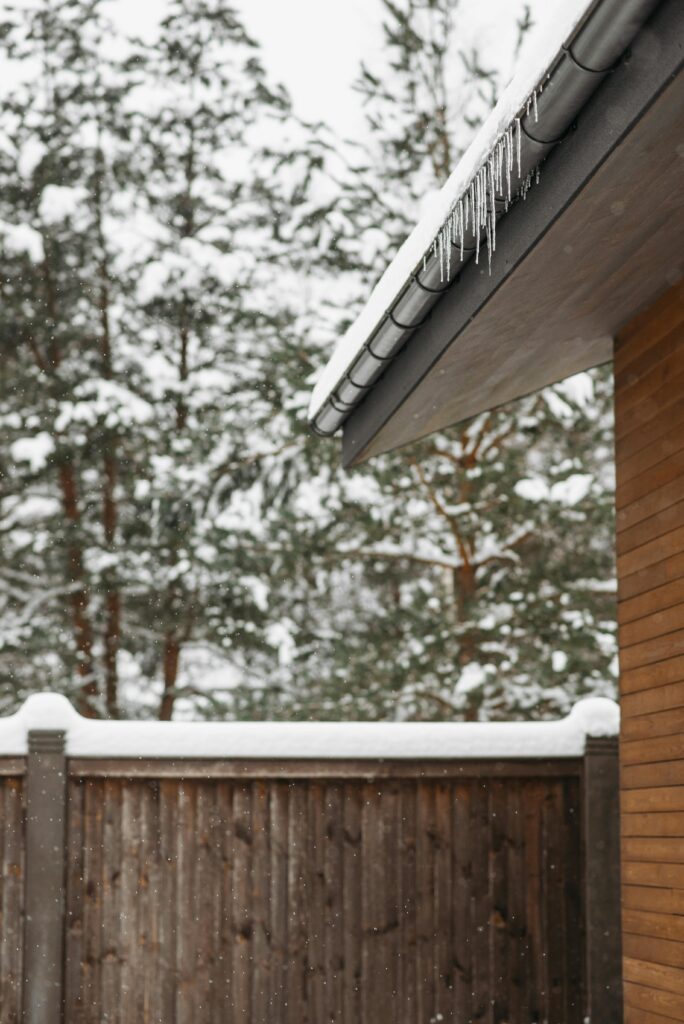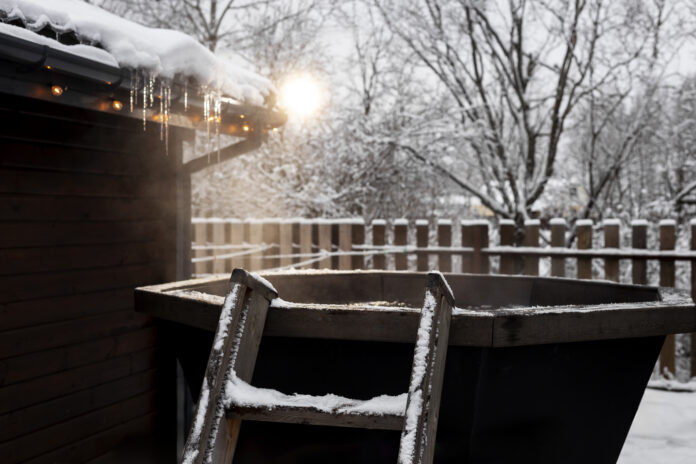Introduction
Understanding how ice dams form in gutters is essential for homeowners looking to prevent ice dams and protect their property from winter damage. Ice dams develop when melting snow refreezes along the roof edge, creating blockages in gutters that lead to water backup and potential leaks. Preventing ice dams involves proper winter gutter maintenance, including insulation improvements, gutter cleaning, and ventilation. In this guide, we’ll cover the causes of ice dams, the risks they pose, and effective strategies to keep your gutters clear and your home safe all winter.
How Ice Dams Form in Gutters and Their Impact on Your Home

Ice dams form in gutters when melting snow from the warmer parts of the roof flows downward and refreezes along the colder edges. This typically happens when warm air from the attic heats up the roof, causing snow to melt even in cold weather. As the water flows to the roof’s edge and into the gutter, it encounters colder temperatures and refreezes, eventually building up into an ice dam. This ice can block water flow, causing it to pool on the roof and seep under shingles, leading to leaks, gutter damage, and even interior water damage. Understanding how ice dams form in gutters is the first step in taking preventative measures to protect your home.
1. What Are Ice Dams?
Ice dams are ridges of ice that form along the edges of your roof, typically around the gutters. They occur when melting snow refreezes as it flows down a sloped roof, leading to a buildup of ice that can prevent water from properly draining through the gutters. Over time, this accumulated ice can cause water to back up behind the dam, potentially leading to roof leaks, gutter damage, and other structural issues.
- Formation Process: Ice dams usually form when parts of the roof are warmer than the outer edges. As snow in the warmer areas melts, it flows downward toward the cooler edges, where it refreezes and creates a barrier.
- Problematic Effects: Once an ice dam forms, it can cause water to pool on the roof and seep under shingles, leading to leaks, wood rot, and even mold growth.
2. How Do Ice Dams Form in Gutters?
Ice dams tend to develop in gutters when attic heat escapes and warms the roof. This causes snow near the center of the roof to melt, while the outer edges, where temperatures are lower, remain cold. Melted snow travels to the roof’s edge and into the gutters, where colder temperatures cause it to refreeze. Gradually, the ice builds up, creating a blockage that stops water from draining through the gutters and downspouts.
- Temperature Differences: Ice dams are often caused by uneven roof temperatures. The central roof area may be above freezing, while the edges remain below freezing, leading to water refreezing along the edges.
- Blocked Gutters: Gutters blocked by ice dams cannot drain water effectively, causing water to pool and eventually seep into the roof structure, which can lead to costly repairs.
3. Problems Caused by Ice Dams
Ice dams can cause extensive damage to both your gutter system and your home’s structural integrity. Here are some of the main problems they create:
- Roof Damage: When water backs up behind an ice dam, it can seep under roof shingles, leading to roof leaks and wood rot in the underlying structure.
- Gutter Damage: The weight of the ice can strain and even detach gutters from the roofline, leading to gutter damage that may require costly repairs or replacement.
- Water Intrusion: Ice dams can cause water to seep into your attic, walls, and ceiling, resulting in moisture damage, insulation deterioration, and mold growth.
- Interior Damage: In severe cases, water from ice dams can damage your home’s interior walls, ceilings, and flooring, leading to expensive repairs.
4. How to Prevent Ice Dams in Gutters
Fortunately, there are several effective strategies for preventing ice dams from forming in your gutters and protecting your home from related damage. Here are some key preventive steps:
- Improve Attic Insulation: Proper insulation in your attic is one of the most effective ways to prevent heat from escaping to the roof, which can help keep your roof’s temperature even. Adding insulation to the attic floor prevents warm air from entering the attic and heating the roof’s center, reducing the risk of ice dam formation.
- Ensure Proper Ventilation: Proper attic ventilation allows cold air to circulate evenly under the roof, keeping its surface temperature consistent. This reduces the melting and refreezing cycles that cause ice dams. Ridge vents, soffit vents, or attic fans can be used to improve ventilation and regulate room temperature.
- Clean Gutters and Downspouts: Keeping gutters and downspouts clear of leaves, debris, and ice is essential for preventing ice dams. When gutters are clean, water flows freely and is less likely to accumulate and freeze in place. Before winter, make sure your gutters are clean to allow for proper drainage.
- Use Heat Cables: Heat cables, also known as heating cables or heat tape, can be installed along the roof’s edges and in the gutters to melt snow and ice. These cables help maintain consistent temperatures along the roofline, preventing ice from accumulating in the gutters. Make sure to follow manufacturer instructions and install them safely.
Conclusion
Ice dams can cause serious damage to your home if not prevented or properly managed. By understanding how ice dams form and taking proactive measures like improving attic insulation, sealing air leaks, and maintaining your gutter system, you can protect your home from costly winter damage. Simple steps, such as installing heat cables or using gutter guards, can go a long way in keeping your gutters and roof clear of ice, ensuring that your home remains safe and secure throughout the winter season.














